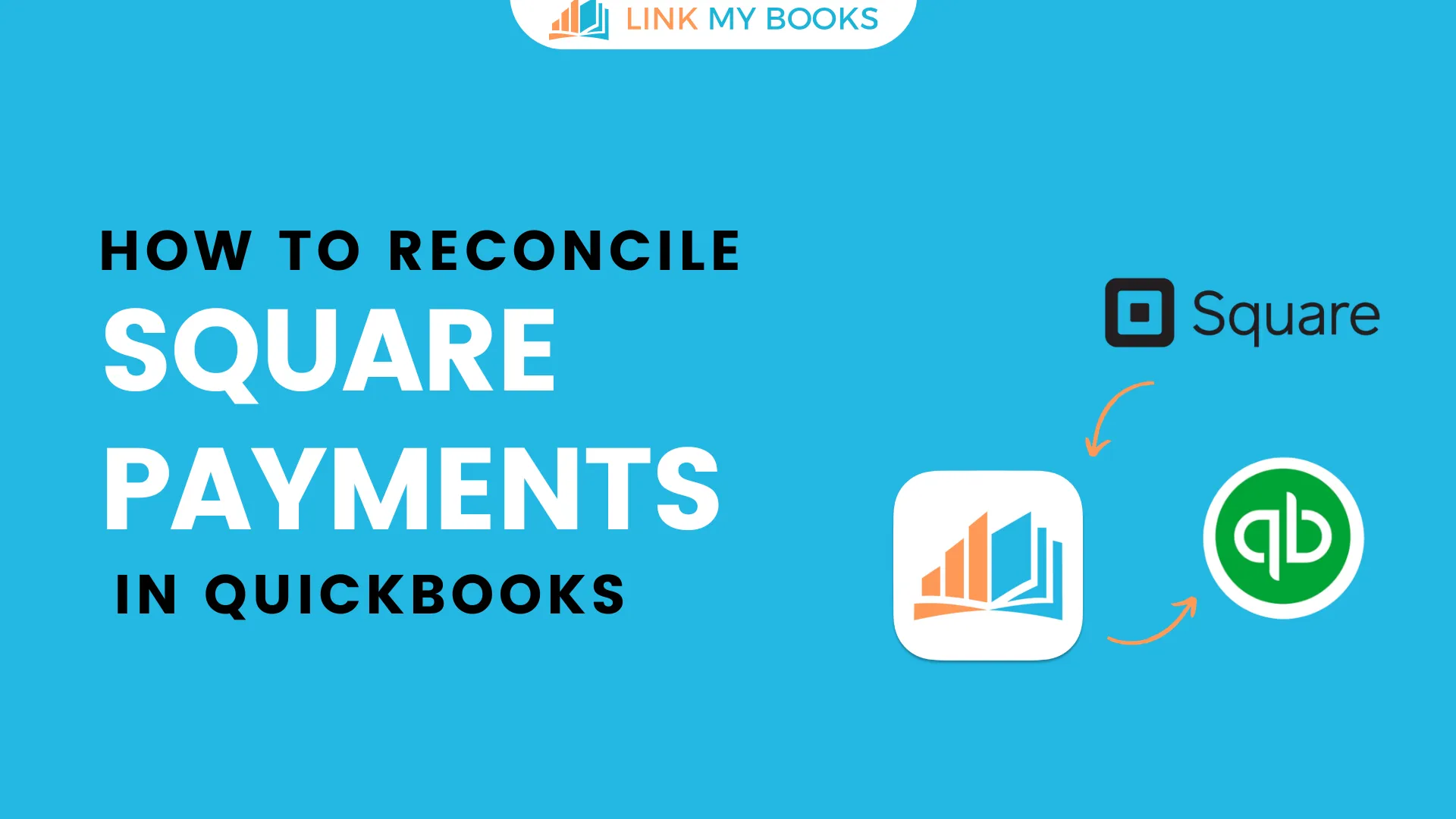Ever wondered about the financial success behind those number-crunching wizards? Let's dive deep into the world of accounting firm revenues and uncover the secrets of their profitability.
Whether you're a curious business owner, an aspiring accountant, or an e-commerce entrepreneur looking to understand the financial landscape, this comprehensive guide will give you the inside scoop on accounting firm earnings.
Key Takeaways from this Post
Accounting firm profitability varies widely based on size, with small firms often enjoying higher profit margins (20-40%) due to lower overhead, while larger firms typically see margins of 10-20% but benefit from economies of scale.
The Big Four accounting firms (Deloitte, EY, PwC, and KPMG) generate massive revenues ($32-50 billion annually) and offer a wide range of services beyond traditional accounting, including advisory and consulting.
Emerging revenue streams for forward-thinking accounting practices include sustainability and ESG reporting, crypto and blockchain accounting, data analytics, cybersecurity advisory, and AI implementation for finance.







The Money-Making Factors: What Drives Accounting Firm Profits?
Before we break down the numbers, let’s look at what influences an accounting firm’s bottom line:
- Firm size and location:
From small-town practices to big-city powerhouses, size and location play crucial roles. An Urban firm can often command higher rates but face steeper operational costs.
- Specializations and services:
The more unique and in-demand the specialization, the more lucrative it can be. Niche expertise in areas like forensic accounting or international tax can significantly boost profitability.
- Client base and industry focus:
Who you work with matters. Outfits focusing on high-growth industries or Fortune 500 companies often see higher revenues.
- Reputation and experience:
Building trust equals building wealth. Agencies with strong reputations can charge premium rates and attract high-value clients.
- Pricing strategy:
Value-based pricing vs. hourly rates. Many successful firms are moving away from traditional hourly billing to value-based models that better reflect the impact of their services on firm revenue and profitability.
- Operational efficiency:
Streamlined processes fatten profit margins. Embracing technology and optimizing workflows can dramatically increase profitability.
- Marketing and business development:
Effective marketing strategies and networking can lead to a steady influx of high-value clients.
- Staff expertise and retention:
Highly skilled staff can handle complex projects more efficiently, increasing billable rates and client satisfaction.
- Delegation and strategic focus:
Firm owners need to delegate lower-value activities to team members to free up their time for strategic business development and client acquisition. This shift allows firm owners to focus on growing the business and attracting high-value clients.
Small Accounting Firms: The Agile Specialists

Revenue Range: $200,000 - $1 million per year
- Challenges:
- Managing cash flow and ensuring consistent revenue streams.
- Attracting and retaining clients in a competitive market.
- Keeping up with regulatory changes and compliance requirements.
- Adopting new technologies to improve efficiency and service delivery.
- Delegating lower-value activities: Firm owners need to delegate lower-value activities to team members to focus on strategic business development and growth. This allows firm owners to concentrate on high-impact tasks that drive the practice forward.
Key Characteristics:
- Typically 1-10 employees
- Often specialize in specific industries or services
- Strong personal relationships with clients
- Usually serve local small businesses and individuals
Firm Revenue Breakdown:
- Tax preparation: 40-60% of revenue. This includes personal tax returns, which are a significant part of the revenue for a small accounting firm. Outsourcing compliance work, such as year-end accounts and personal tax returns, can help increase capacity without the costs of a full or part-time member of staff.
- Bookkeeping services: 20-30% of revenue
- Auditing and assurance: 10-20% of revenue
- Advisory services: 5-10% of revenue
Profit Margins:
Small firms often enjoy higher profit margins, ranging from 20-40%, due to lower overhead costs.
Challenges:
- Limited resources for marketing and technology investment
- Difficulty competing with larger ventures for top talent
- Seasonal fluctuations in workload (e.g., tax season)
- The need for firm owners to delegate lower-value activities to team members to free up their time for strategic business development and client acquisition
Opportunities:
- Niche specialization can command premium rates
- Agility to adapt quickly to market changes
- Potential for high client loyalty due to personalized service
Mid-Sized Accounting Firms: The Balancing Act
Revenue Range: $1 million - $20 million per year
Key Characteristics:
- Typically 10-100 employees
- Broader range of services than small firms
- Mix of small business and larger corporate clients
- Often have multiple partners and specialized departments
Revenue Breakdown:
- Audit and assurance: 30-40% of revenue
- Tax services: 25-35% of revenue
- Advisory services: 15-25% of revenue
- Bookkeeping and payroll: 10-15% of revenue
Profit Margins:
Mid-sized firms typically see profit margins of 15-25%, balancing growth investments with profitability.
Challenges:
- Competing with both small firms’ personalized service and large firms’ resources
- Managing growth while maintaining quality: As a firm owner, it is crucial to delegate lower-value activities to team members. This allows the firm owner to focus on strategic business development and client acquisition, which are essential for growth.
- Investing in technology to stay competitive
Opportunities:
- Expanding service offerings to capture more market share
- Developing industry-specific expertise
- Leveraging technology for improved efficiency and client service
Large National Firms: The Comprehensive Providers of Advisory Services

Revenue Range: $20 million - $500 million per year
Key Characteristics:
- 100+ employees, often with multiple offices
- Comprehensive service offerings across various industries
- Serve major corporations and may have international reach
- Significant investments in technology and specialized talent
Revenue Breakdown:
- Audit and assurance: 35-45% of revenue
- Tax services: 25-30% of revenue
- Advisory and consulting: 20-30% of revenue
- Other specialized services: 5-10% of revenue
Profit Margins:
Large firms typically see profit margins of 10-20%, with variations across service lines.
Challenges:
- Maintaining agility in a large organizational structure
- Balancing standardization with customization of services
- Competing with Big Four firms for major clients and top talent
- Delegating lower-value activities to team members to free up the firm owner's time for strategic business development and growth
Opportunities:
- Leveraging economies of scale for increased efficiency
- Developing cutting-edge technology solutions for clients
- Expanding into high-growth markets and service areas
The Big Four: Global Powerhouses
Revenue Range: Over $20 billion per year
While we've touched on the Big Four earlier, it's worth noting their immense scale and influence. These firms—Deloitte, EY, PwC, and KPMG—operate on a global level, serving multinational corporations, governments, and other large entities.
Key Differentiators:
- Global presence with offices in most major cities worldwide
- Massive investments in research and development
- Ability to handle the most complex international accounting and consulting projects
- Significant influence on accounting standards and practices
Revenue Breakdown:
- Audit and assurance: 30-40% of revenue
- Advisory and consulting: 30-40% of revenue
- Tax services: 20-25% of revenue
- Other specialized services: 5-10% of revenue
The Big Four's Big Bucks: Top-Earning Accounting Firms
Speaking of billions, let's look at the industry giants' 2022 revenues and their primary growth drivers:
- Deloitte: $50.2 billion
- Strong growth in consulting and advisory services
- Significant investments in AI and digital transformation
- EY: $45.4 billion
- Robust performance in assurance and tax services
- Expanding sustainability and ESG consulting practices
- PwC: $45.1 billion
- Focus on tech-enabled transformations for clients
- Growing cybersecurity and privacy services
- KPMG: $32.1 billion
- Emphasis on audit quality and innovation
- Expansion in emerging markets
Beyond the Top Line: Profit Margins Revealed

Revenue is one thing, but profit tells the real story. Here's what different firms are keeping after expenses:
- Small firms: 20-40% profit margin
- Lower overhead costs but potentially higher relative marketing expenses
- Profit heavily influenced by the owner's ability to manage costs and price services effectively
- Mid-sized firms: 15-25% profit margin
- Balance between investing in growth and maintaining profitability
- Often face challenges in scaling efficiently
- Large firms: 10-20% profit margin
- Significant investments in technology and talent
- Complex organizational structures can impact overall margins
- Big Four firms: 15-30% profit margin
- Economies of scale allow for higher margins in some service lines
- Heavy investments in research, development, and global operations
Pro tip: Advisory and consulting services often boast higher margins (30-50%) than traditional audit (10-20%) and tax work (20-30%).
Global Money Matters: Accounting Earnings Around the World
Accounting isn't just a local game. Let's see how the numbers stack up internationally across different firm sizes:
United States: The Heavyweight Champion
- Big Four firms: Earning $20-50 billion annually
- Strong demand for advisory services, particularly in tech and healthcare sectors
- Large national firms: Revenues ranging from $100 million to $2 billion
- Competing effectively in mid-market segments and specialized industries
- Mid-sized firms: Typically earning $10-100 million annually
- Often focusing on specific regions or industries, like real estate or manufacturing
- Small local firms: Average revenues of $500,000 to $5 million
- Thriving by serving small businesses and individuals, especially in tax services
United Kingdom: A Strong Contender
- Big Four revenues: Range from £2-4 billion
- Brexit has created new opportunities in regulatory compliance and international trade advisory
- Large national firms: Earning £100-500 million annually
- Strong presence in audit and assurance for mid-cap listed companies
- Mid-sized firms: Revenues between £5-100 million
- Often specializing in sectors like financial services or technology
- Small local firms: Average turnover of £250,000 to £2 million
- Many focusing on tax advisory for SMEs and high-net-worth individuals
Australia: Punching Above Its Weight
- Big Four revenues: Hit AUD 1-2 billion
- Growing demand for sustainability reporting and digital transformation services
- Large national firms: Earning AUD 100-500 million
- Strong in serving the mining and natural resources sectors
- Mid-sized firms: Revenues of AUD 10-100 million
- Often specializing in areas like agribusiness or healthcare
- Small local firms: Average revenues of AUD 500,000 to AUD 5 million
- Many serving small businesses and start-ups in major cities and regional areas
Emerging Markets (e.g., India, Brazil):
- Big Four firms: Earning $500 million to $1 billion annually
- Rapid economic development driving demand for professional services
- Large national firms: Revenues ranging from $50-500 million
- Growing quickly, often through partnerships with international networks
- Mid-sized firms: Typically earning $5-50 million
- Benefiting from the growing middle class and increasing business formalization
- Small local firms: Average revenues of $100,000 to $1 million
- Playing crucial roles in supporting local businesses and entrepreneurs
Germany: Europe's Economic Powerhouse
- Big Four revenues: Around €2-3 billion
- Strong manufacturing sector drives demand for supply chain and operations consulting
- Large national firms: Earning €100-500 million
- Often specializing in serving the 'Mittelstand' (mid-sized companies)
- Mid-sized firms: Revenues between €10-100 million
- Many focusing on tax advisory and audit for family-owned businesses
- Small local firms: Average turnover of €500,000 to €5 million
- Serving local SMEs and providing personalized tax services
Japan: Unique Market Dynamics
- Big Four revenues: Approximately ¥100-150 billion
- Complex regulatory environment creates opportunities for compliance and risk management services
- Large national firms: Earning ¥10-50 billion
- Often specializing in serving Japan's unique conglomerate structures (keiretsu)
- Mid-sized firms: Revenues of ¥1-10 billion
- Many focusing on supporting Japanese companies in international expansion
- Small local firms: Average revenues of ¥50 million to ¥500 million
- Providing essential services to Japan's vast network of small businesses and risk management services

Riding the Economic Waves: How Market Cycles Impact Accounting Profits
Accounting firms aren't immune to economic fluctuations:
- During booms:
- Advisory services, M&A support, and IPO assistance boost revenues
- Increased client budgets for discretionary projects
- Talent acquisition becomes more competitive and costly
- During recessions:
- Core audit and tax services provide stability
- Consulting may take a hit, but restructuring services often see increased demand
- Cost-cutting measures become crucial for maintaining profitability
- Major events (like the COVID-19 pandemic):
- Initial revenue dips followed by increased demand for crisis management
- Rapid shift to remote work testing technological capabilities
- New service lines emerge (e.g., PPP loan assistance, business continuity planning)
- Regulatory changes:
- Can create short-term spikes in demand (e.g., SOX implementation in the early 2000s)
- Ongoing need for compliance expertise drives steady revenue streams
The New Money: Emerging Revenue Streams for Forward-Thinking Practices
Smart accounting practices are cashing in on these hot new services:
- Sustainability and ESG reporting:
- Helping companies measure and report on environmental impact
- Assisting with sustainability-linked financial products
- Crypto and blockchain accounting:
- Navigating the complex world of digital asset taxation
- Implementing blockchain-based audit trails
- Data analytics and business intelligence:
- Turning financial data into actionable business insights
- Developing predictive models for financial forecasting
- Cybersecurity advisory:
- Conducting IT audits and risk assessments
- Developing incident response plans for financial data breaches
- AI implementation for finance:
- Automating routine accounting tasks with machine learning
- Implementing AI-driven fraud detection systems
Tech Takeover: How Innovation is Reshaping Accounting Profits

Technology isn't just changing how accountants work—it's changing how they make money:
- Automation:
- Frees up time for lucrative advisory services
- Allows firms to handle more clients without proportionally increasing staff
- Cloud solutions:
- Enable real-time insights and collaboration
- Create opportunities for ongoing, subscription-based services
- AI and machine learning:
- Enhance audit quality and efficiency
- Open new service lines in predictive analytics and risk assessment
- Subscription pricing:
- Provides steady income for ongoing advisory services
- Improves cash flow predictability for firms
- Virtual CFO services:
- High-value expertise without the corner office
- Expands potential client base beyond geographical limitations
Skills That Pay the Bills: Certifications That Command Top Dollar for Newly Qualified Accountants
Want to charge premium rates? These certifications can help:
- CISA (Certified Information Systems Auditor)
- Average salary premium: 20-30% higher than non-certified peers
- CFF (Certified in Financial Forensics)
- Can command hourly rates 50-100% higher for specialized forensic work
- CITP (Certified Information Technology Professional)
- Increasingly valuable as firms expand tech advisory services
- CVA (Certified Valuation Analyst)
- Essential for high-value M&A and dispute resolution work
- Data analytics and AI certifications
- Can lead to billing rates 30-50% higher than traditional accounting services
Client Cash: What Businesses Will Pay Top Dollar For
Businesses are happy to shell out for:
- Strategic financial advice and planning:
- Helping them see the big picture and plan for long-term success
- Often billed at 2-3 times the rate of compliance work
- Risk management and compliance expertise:
- Keeping them out of hot water with regulators
- Particularly valuable in highly regulated industries (e.g., finance, healthcare)
- Industry-specific insights:
- Speaking their language and providing benchmarking against peers
- Can command premium rates due to specialized knowledge
- Tech integration support:
- Bringing them into the digital age with modern financial systems
- Often leads to long-term, high-value consulting engagements
- Proactive tax strategies:
- Keeping more money in their pockets through smart tax planning
- Value-based pricing can result in fees tied to tax savings
The Bottom Line: Maximizing Accounting Firm Profits

The accounting industry is ripe with profit potential, but success isn’t guaranteed. The most profitable firms are those that:
- Adapt to market changes:
- Stay ahead of regulatory shifts and economic trends
- Continuously evolve service offerings to meet emerging client needs
- Invest in high-value skills:
- Prioritize ongoing training and development for staff
- Cultivate expertise in high-demand, specialized areas
- Leverage technology:
- Implement cutting-edge tools to improve efficiency and service quality
- Use data analytics to identify new business opportunities
- Focus on client needs:
- Develop deep understanding of clients’ industries and challenges
- Proactively offer solutions rather than just responding to requests
- Diversify services:
- Balance traditional compliance work with high-margin advisory services
- Explore cross-selling opportunities within existing client base
- Build strong cultures:
- Foster employee engagement to improve retention and productivity
- Create an environment that attracts top talent in a competitive market
- Master pricing strategies:
- Implement value-based pricing models where appropriate
- Regularly review and adjust pricing to reflect market conditions and service value
- Delegate lower-value activities:
- Firm owners should delegate lower-value activities to team members
- Free up the firm owner's time for strategic business development and client acquisition
Balancing the Books: The Future of Accounting Firm Profitability
As we’ve seen, the accounting industry offers substantial profit potential across firms of all sizes, from local specialists to global powerhouses. The key to success lies in adapting to market changes, investing in high-value skills, and leveraging technology to enhance service delivery.
Small firms can thrive by focusing on niche specializations and building strong client relationships.
Mid-sized firms have the opportunity to balance personalized service with expanded offerings, while large national firms and the Big Four can capitalize on their scale to drive innovation and tackle complex global challenges.
For accounting professionals and firm owners, the message is clear: stay agile, invest in your team’s skills, and leverage cutting-edge tools to streamline operations.
Firm owners, in particular, must adapt to market changes and delegate lower value activities to team members, freeing up their time for strategic business development and client acquisition.
For businesses seeking accounting services, understanding this landscape can help you choose the right partner to support your financial needs and growth ambitions.
In an era where financial complexity is increasing, especially for e-commerce businesses operating across borders, having the right tools and expertise is more crucial than ever.
Streamline Your E-commerce Finances with Link My Books
.webp)
Every e-commerce journey deserves a seamless financial solution. As you've seen, efficient bookkeeping is crucial for maintaining healthy profit margins - not just for accounting firms, but for businesses of all sizes.
Avoid the hassle of manual bookkeeping and experience effortless management with Link My Books. Whether you're a Shopify seller, an Amazon merchant, or operating across multiple platforms, our solution can help you elevate your bookkeeping and save precious time each week.
With Link My Books, you can:
- Automate data entry and reconciliation
- Gain real-time insights into your financial performance
- Ensure accuracy in multi-currency transactions
- Streamline tax compliance across different markets
Don't let complex financials hold your e-commerce business back. Join the thousands of online sellers who have transformed their bookkeeping process with Link My Books.
Begin your 14-day free trial today and take the first step towards financial clarity and efficiency. Your future self (and your accountant) will thank you!



















.png)